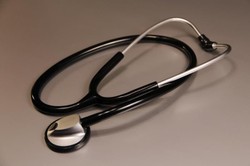This disease has been in the medical literature for many decades, and J. Da Costa described it in 1871. Scientists changed its name to Da Costa’s syndrome as well as Soldier’s Heart. These clients have several signs and symptoms which may prompt them to visit a physician’s office. The term “soldier’s heart” stems from military experiences in Europe. In other words, researchers wondered whether military duty and POTS had a connection [1, 2, 3].

Postural Orthostatic Tachycardia Syndrome (POTS)
Postural orthostatic tachycardia syndrome is a well-known infirmity which may occur in children and adults.
Medical Research History
Though clinicians did not have satisfactory treatments 150 years ago for this disease, they gave it several names over the years. Some of these included neurocirculatory asthenia, effort syndrome, and anxiety neurosis. Dr. Henry Hartshorne wrote an article about the subject several years before Dr. Jacob M. Da Costa did. However, Da Costa has been the most well-known researcher on this matter during the 19th century [1, 3].
Hartshorne described this condition as “muscular exhaustion of the heart.” He too believed that unclean water, sleep deprivation, lack of food, and malaria were elements that led to this mysterious infirmity [1, 3].
Prior to Da Costa’s scholarly publication in 1871, he became Chairman of Medicine at Jefferson Medical College. His title for this illness then was “cardiac malady” which also occurred in military personnel. Other terms that Dr. Da Costa used were “functional disorder” and “irritable heart.” For 70 years, there was much clinical investigation of neurocirculatory asthenia. By 1915, publications suggested the term “nervous exhaustion” for German soldiers [3].
Current Views
Research today suggests that there is malfunction of the autonomic nervous system. Many of them are children. For example, they complain of dizziness. There may be decrease in blood pressure as the nervous system is not efficient. Insufficient blood flow to the brain may accompany chest discomfort, fatigue, and shortness of breath. Moreover, there may be impairment of sleep or concentration. Some of them have a viral infection [1, 2].
Girls are more likely than boys to develop this. A parent may have the same illness. There is also a myriad of other situations. Some of them include chronic fatigue, irritable bowel syndrome, and fibromyalgia. Many of these patients will have Ehlers-Danlos syndrome [1, 2].
Evaluation and Management
The clinician must conduct a good history and physical examination. There may be alterations in blood pressure and heart rate. This is especially true when one changes from lying or sitting to standing. One must carefully examine these parameters as they may indicate whether the patient really has POTS [1].
Many people will benefit from swimming or recumbent bicycling. Psychological counseling has been useful as well. Also, an increase in the intake of water and sodium is beneficial. Compression stockings have been helpful in these individuals. Of course, adequate sleep is necessary [1, 2].
There are also several medications available which medical doctors can prescribe.
Conclusion
Despite the complexity of these matters, many people who have POTS will recover and do well. In fact, this had led some researchers to believe that young people will outgrow the condition. This may not be true. However, physicians who follow the client will observe a remarkable resolution of signs and symptoms. Children and adolescents will ultimately visit a health care facility that regularly treats adults. As a result, the pediatrician who previously treated them may not know the outcomes of these cases.
References
1. Lei, L., Chew, D., Sheldon, R. and Raj, S. (2019). Evaluating and managing postural tachycardia syndrome. Cleveland Clinic Journal of Medicine, 86, 333-344.
2. Shillingford, A. (2018). KidsHealth from Nemours. Postural Orthostatic Tachycardia Syndrome. Retrieved June 6, 2019.
3. Oglesby, P. (1987). Da Costa’s syndrome or neurocirculatory asthenia. British Heart Journal, 58, 306-315.
4. Copyright 2019. Michael Koger, Sr., M.D. All rights reserved.
5. The photo shows a stethoscope. Reprinted with permission from U.S. Centers for Disease Control.
Disclaimer
The information contained in this article is for educational purposes only, and one should not use it for diagnosis or treatment without the opinion of a health professional. Any reader who is concerned about his or her health should contact their physician for advice.
You might also like
How to React to and Help a Loved One with CancerDealing with cancer? Learn how to react, treat and care for a loved one when ...
Do You Have Your Own Cure For Cancer?Is it possible you might be completely unaware of the cancer cure, a natural ...



 The Reality of Aspirinon 05/24/2021
The Reality of Aspirinon 05/24/2021
 An Old Microbeon 03/31/2021
An Old Microbeon 03/31/2021
 Coronavirus and Mental Illnesson 02/14/2021
Coronavirus and Mental Illnesson 02/14/2021
 Acute Ischemic Strokeon 12/25/2020
Acute Ischemic Strokeon 12/25/2020


Comments